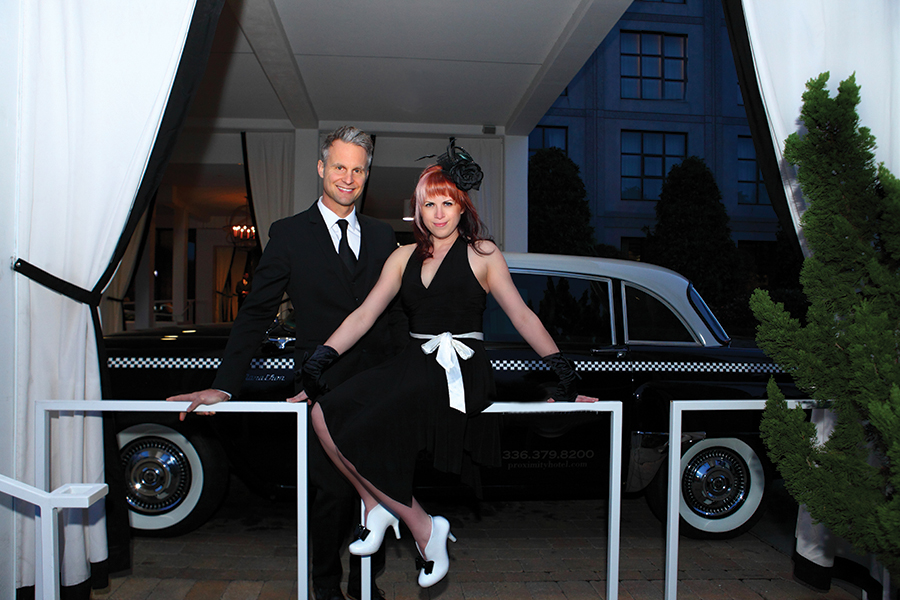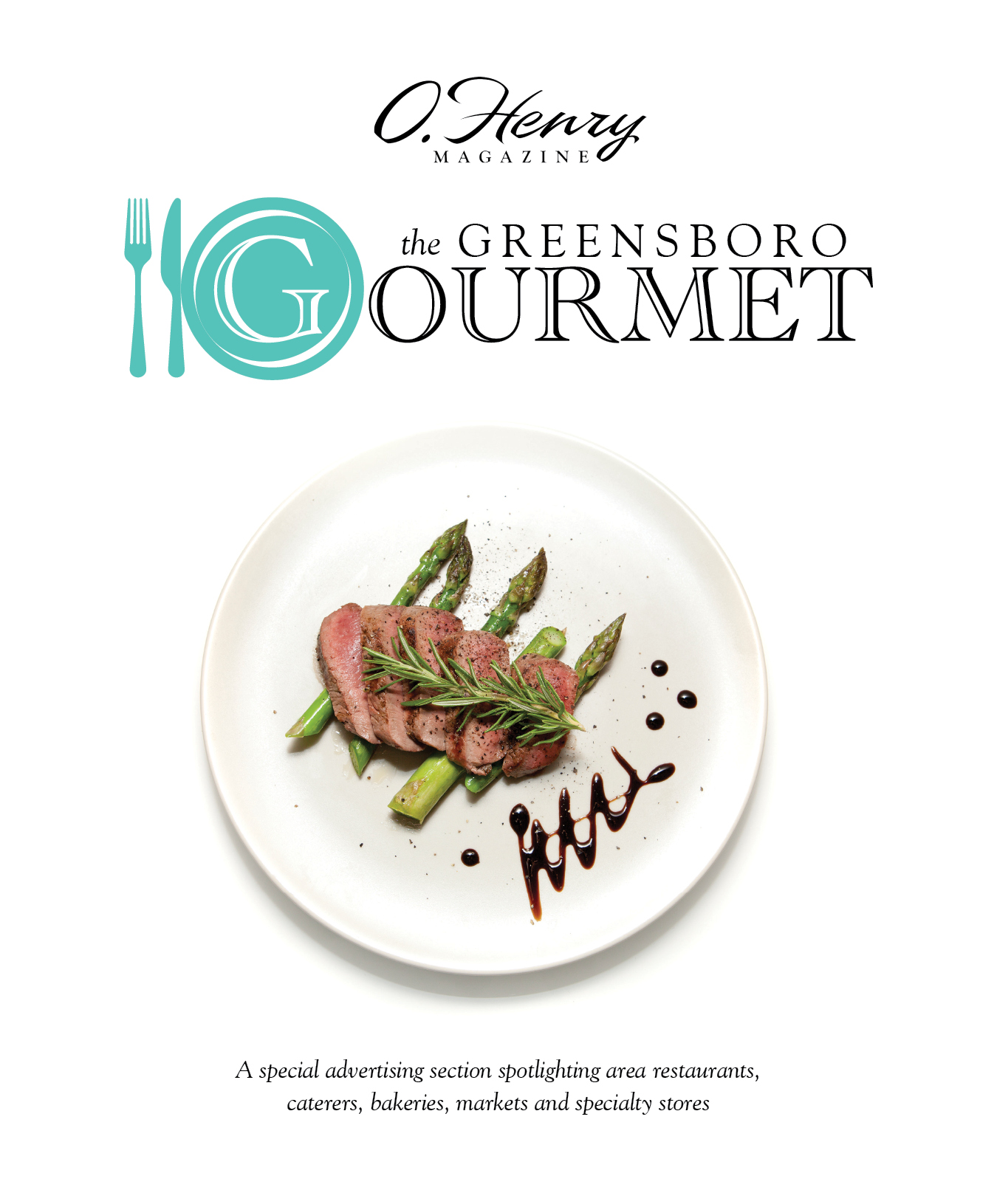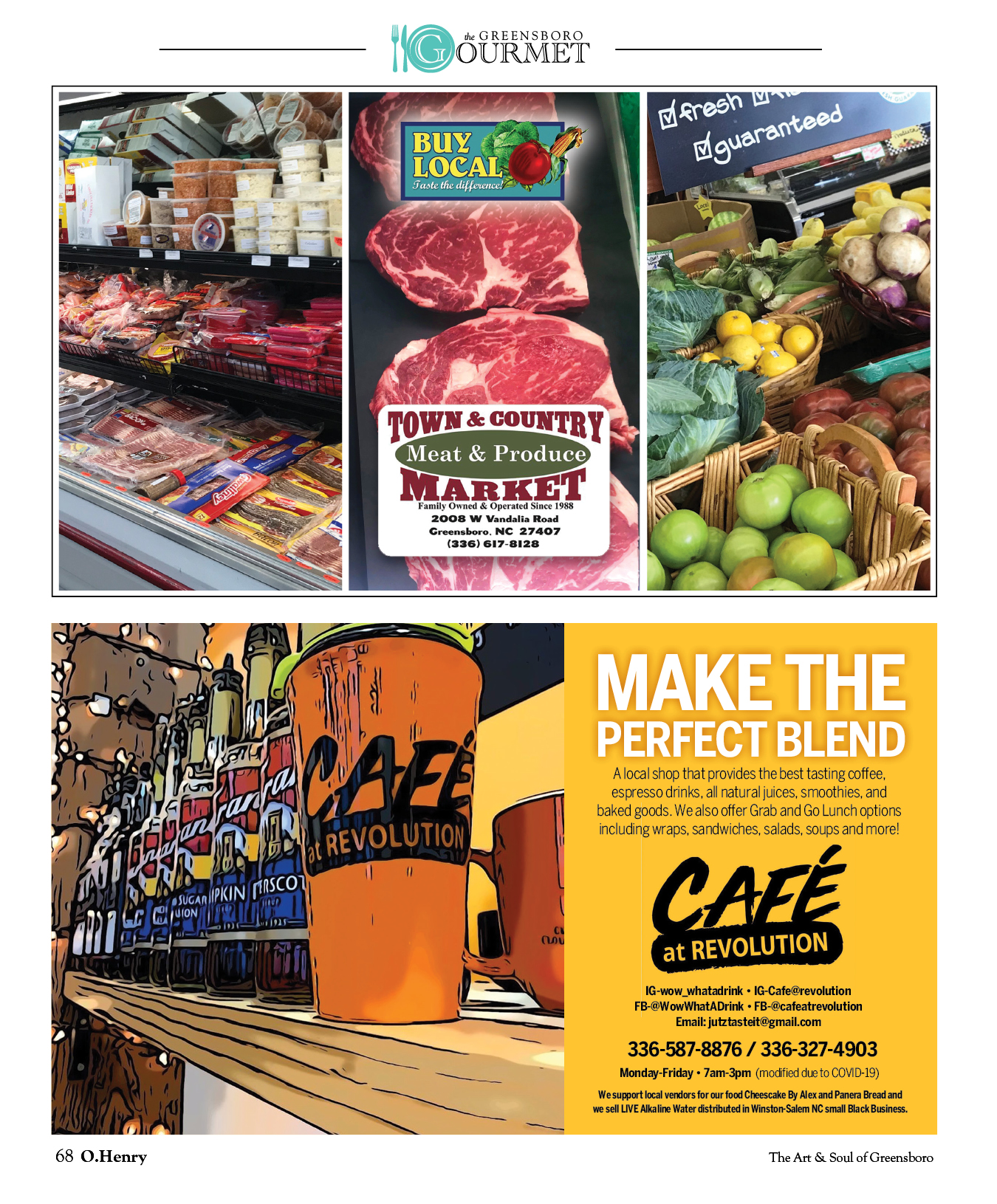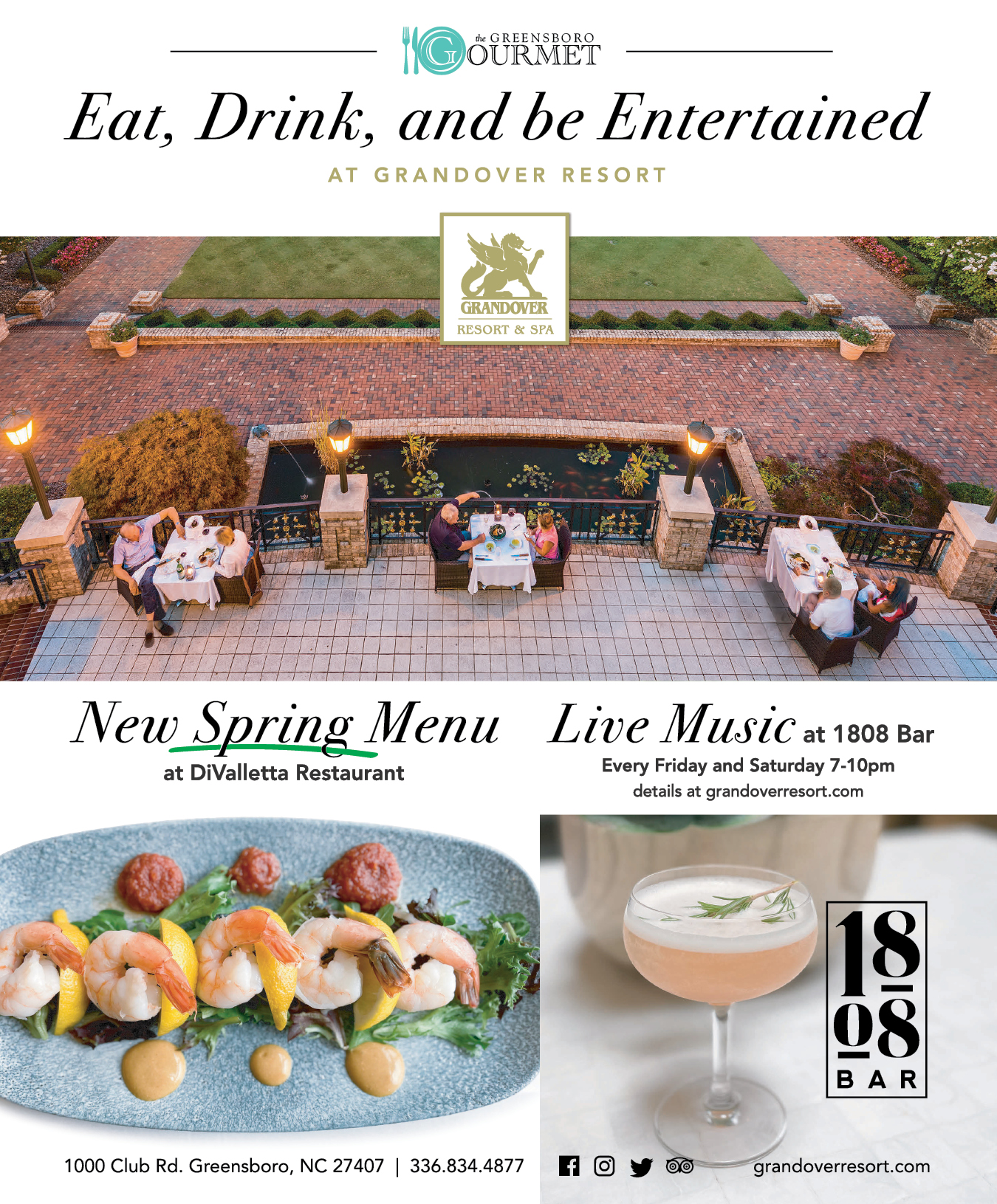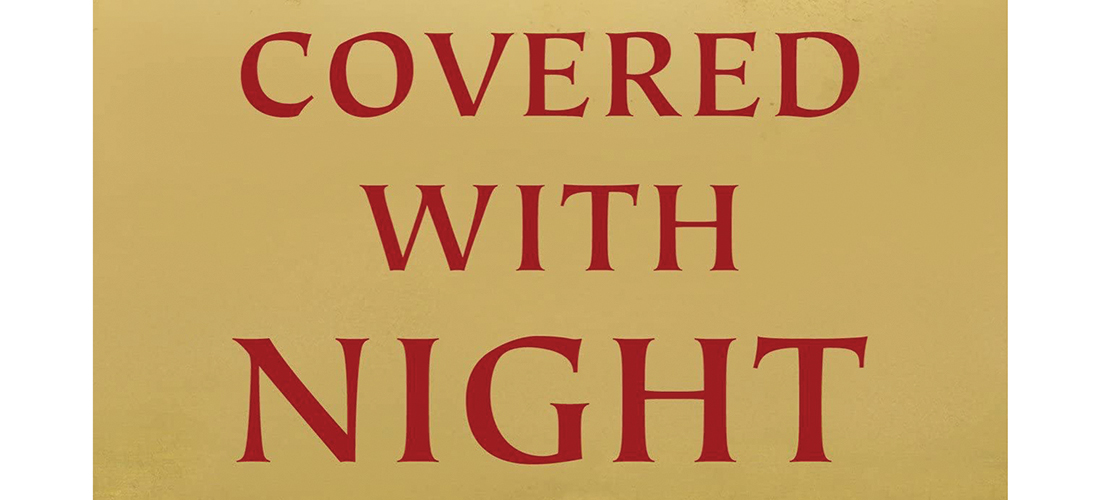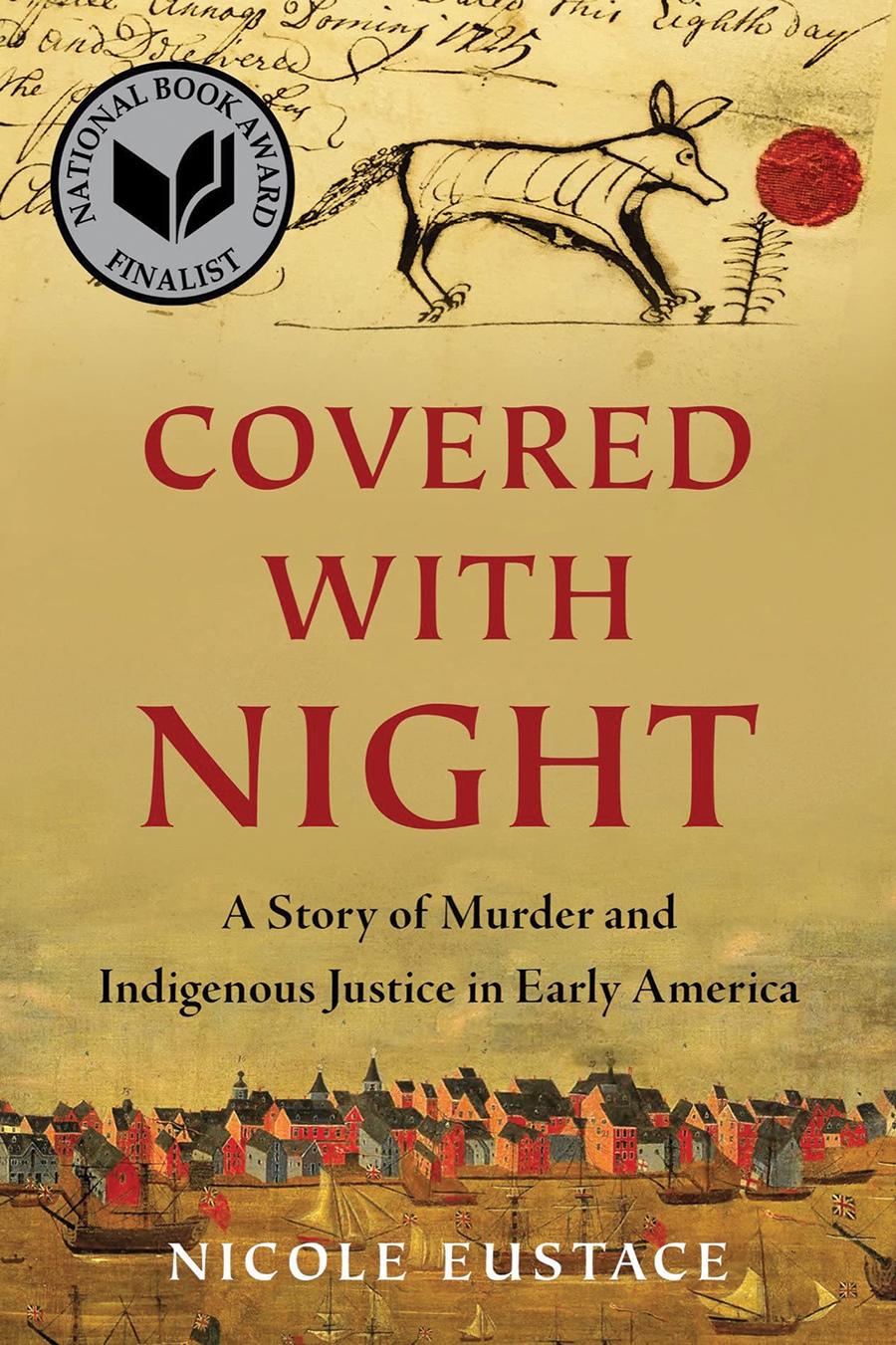Citizen Jim’s Latest Hurrah
Citizen Jim’s Latest Hurrah
With the announcement of the Greensboro-Randolph Megasite, a legendary mayor cements his legacy
By Jim Dodson • Photograph by Mark Wagoner
On a sunny afternoon late last year, former Greensboro mayor and longtime president and chief executive officer of the Joseph M. Bryan Foundation, Jim Melvin, took three old friends for a leisurely drive in the country. His purpose was to show them the 1,800-acre Greensboro-Randolph Megasite off U.S. Highway 421 south of the city, which Melvin and a group of private and public partners hoped would soon become the home to a major transportation-related manufacturing facility.
“I think we finally got it right,” declared the genial former mayor many Triad residents affectionately think of as “Mr. Greensboro” owing to his many years of dynamic civic activism and an unrivaled record of accomplishments over the past half century. “Can’t tell you fellas what’s coming,” he teased with his fellow travelers, “but when this thing is finally announced, which may be very soon, it’s gonna be one of the most exciting things to ever happen to this region, a true game changer — improving lives like you can’t imagine.”
Melvin took a breath and added, “Lemme tell you, it took a lot of faith and unbelievable hard work by a number of folks who never gave up trying to make this thing happen. That’s the real story.”
Seated in the back seat of Melvin’s SUV, a retired textile executive and lifelong friend of Melvin’s named Jimmy Jones couldn’t help smiling, recognizing a well-worn phrase that could be a working motto for his old friend’s dynamic public career.
Some years after Greensboro’s most accomplished public figure in decades left public office and became just Citizen Jim in 1981, the story goes, he was invited by the trustees of Greensboro College to give the school’s annual commencement address.
“When it came time for him to speak,” Jones remembers, “Jim simply walked up to the lectern, looked out at the graduates and declared, ‘I think it’s best to quote the late Winston Churchill. Never give up! Never, never give up!’ And with that, he wished them all good luck and sat down. The crowd loved it. In fact, they gave him a standing ovation. It was vintage Jim Melvin and said everything you need to know about the man.”
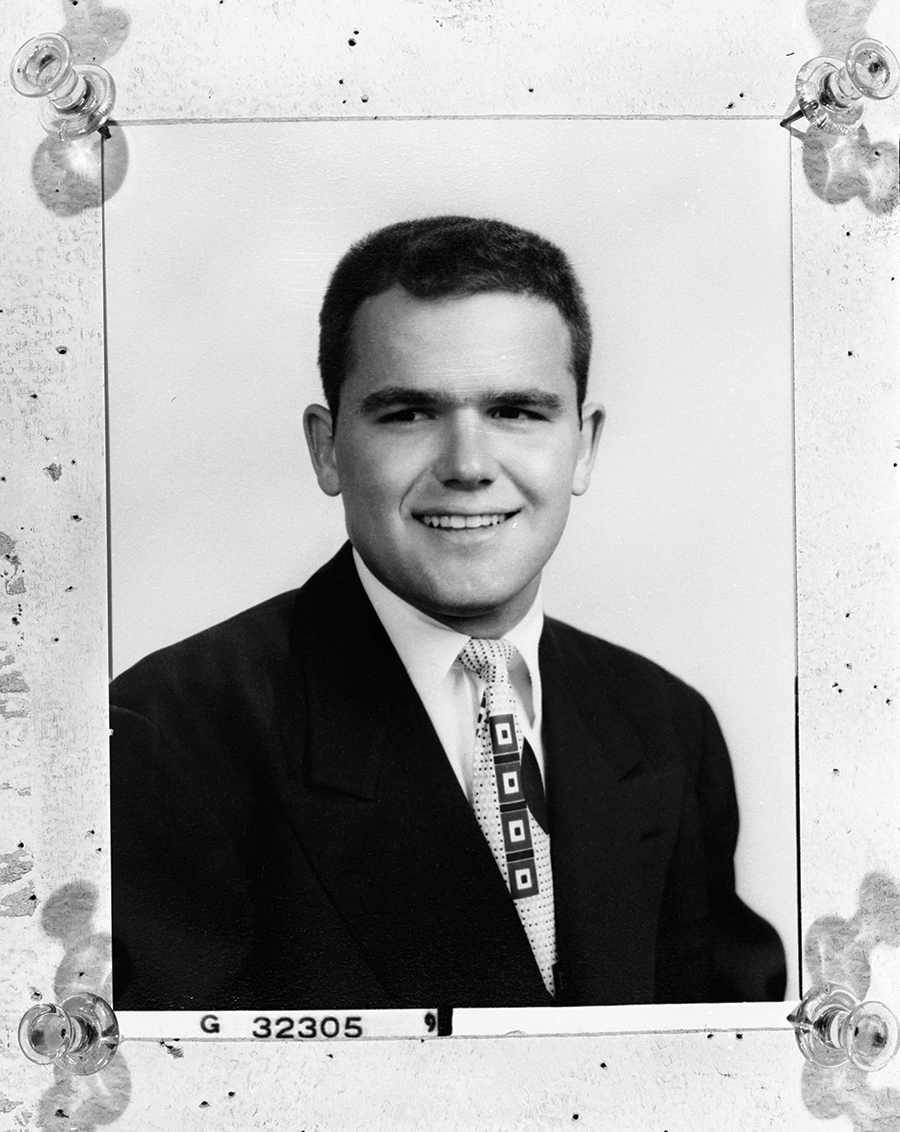
Indeed, true to his word, in early December, a few weeks after he took his pals for a spin in the country, Citizen Jim and a host of key stakeholders unveiled a transformative $1.29 billion deal with Toyota North America to build a new-generation lithium battery manufacturing plant for electric and hybrid automobiles at the Greensboro-Randolph Megasite, projecting employment of at least 1,700 workers by the time it opens in 2025.
In a sense, Melvin’s tireless 10-year quest to bring a major manufacturing facility back to the Triad after decades in which major textile, furniture and other related manufacturing industries fled the region might seem like simple vindication and the perfect coda for a fellow who once invoked the stark words of Winston Churchill at war to inspire Greensboro College graduates. Given his formidable vita over four decades, it’s also tempting to wonder if the triumph of the megasite might be a fitting last hurrah that defines his legacy.
A quick review of Citizen Jim’s remarkable public life and notable civic accomplishments illustrates the point.
Edwin Samuel Melvin, named for both his Greensboro grandfathers and known as “Jim,” grew up on Asheboro Street — today Martin Luther King Boulevard — absorbing the value of long days and hard work from his father, Joe, who owned a popular Texaco filling station. “He was the hardest-working man I ever saw, quite honestly, sunrise to way past sunset every day of the week. He and my mother were also firm believers in the importance of giving back in whatever way you could to help others. That idea stuck with me early.”
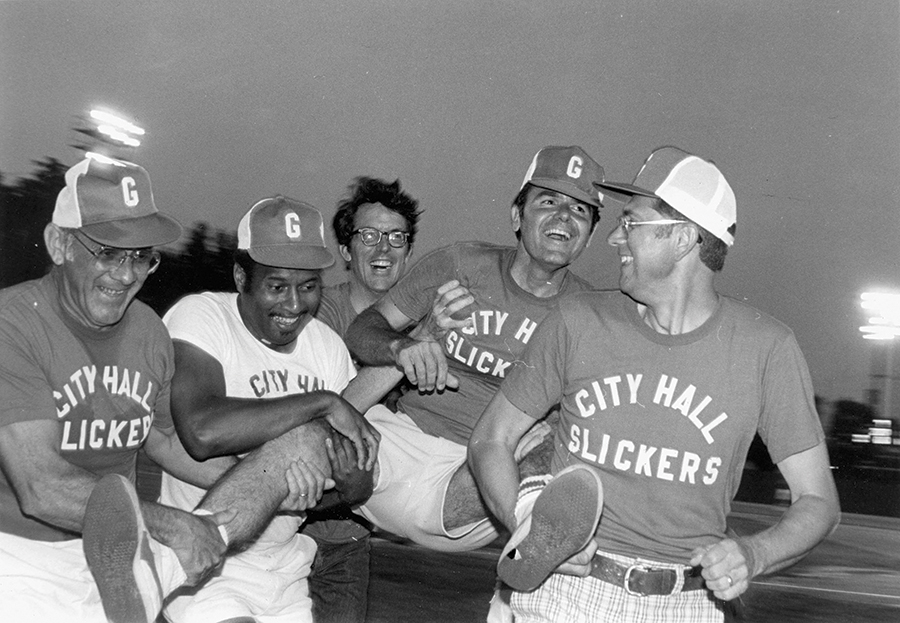
After earning a degree in business from UNC Chapel Hill, followed by a stint in the army, Melvin was at home pumping gas on Asheboro Street for his father one afternoon when the president of a local bank — one of his daddy’s customers — was impressed by young Jim’s can-do attitude and invited him to enroll in the bank’s teller training program.
The work with people suited his personality, even more so when his boss suggested he join the Greensboro Jaycees, an organization full of young go-getters and future movers and shakers, heavily involved in civic activity. Jim signed up in 1961, not long after a guy named Arnold Palmer began setting the golf world on fire. “It was one of the smartest things I ever did. The Jaycees were a fantastic group of people and the GGO [Greater Greensboro Open, forerunner of today’s Wyndham Championship] was just entering its golden years.” Two years after joining, Melvin became the tournament’s charismatic chair, helping to raise more than $1 million that attracted the interests of CBS, which nationally televised the tournament for the first time — and continues to this day.
One year later, Melvin became president of the Jaycee chapter, which under his watch was named “Best Jaycees Club in the World.”
In 1968, he entered politics by serving as campaign manager for Rich Preyer’s successful congressional race. A year later, he ran unsuccessfully for the city council and was chosen by the council to serve as mayor pro tem in 1971. From there, he went on to five consecutive terms as Greensboro’s first publicly elected mayor. During his tenure, Melvin supported expansion of the Greensboro Coliseum, construction of a new municipal office building downtown, creation of the city’s most modern sewage treatment plant and the building of Bryan Park. He also played a pivotal role in the development of the Randleman Reservoir.
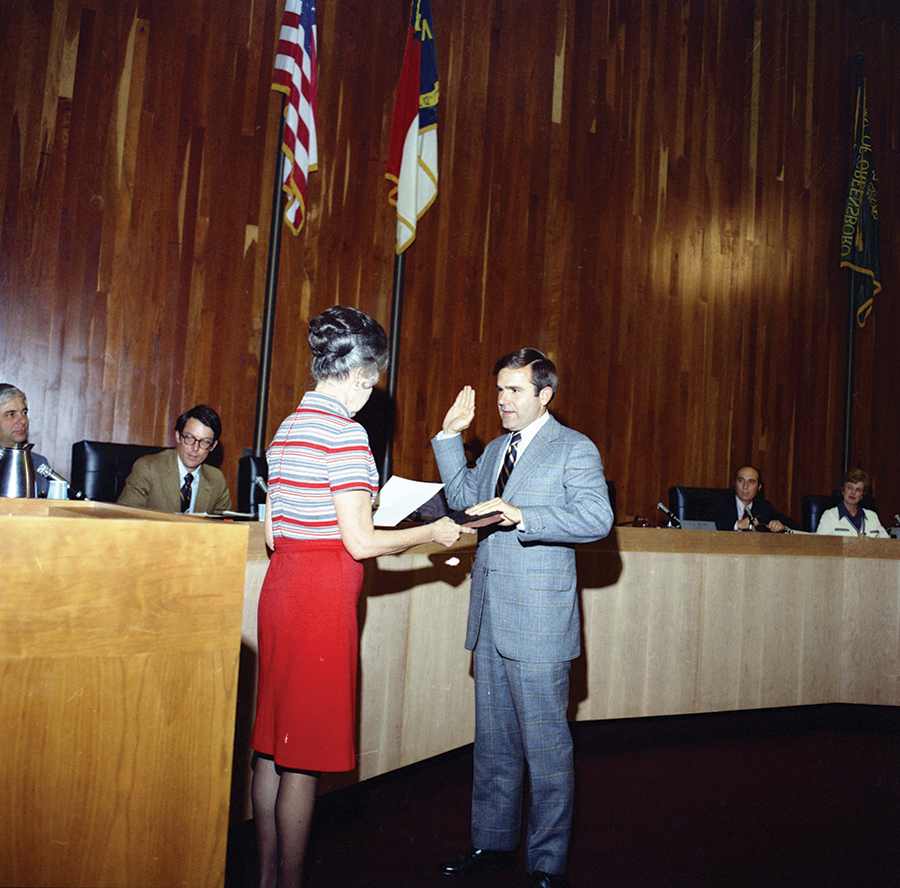
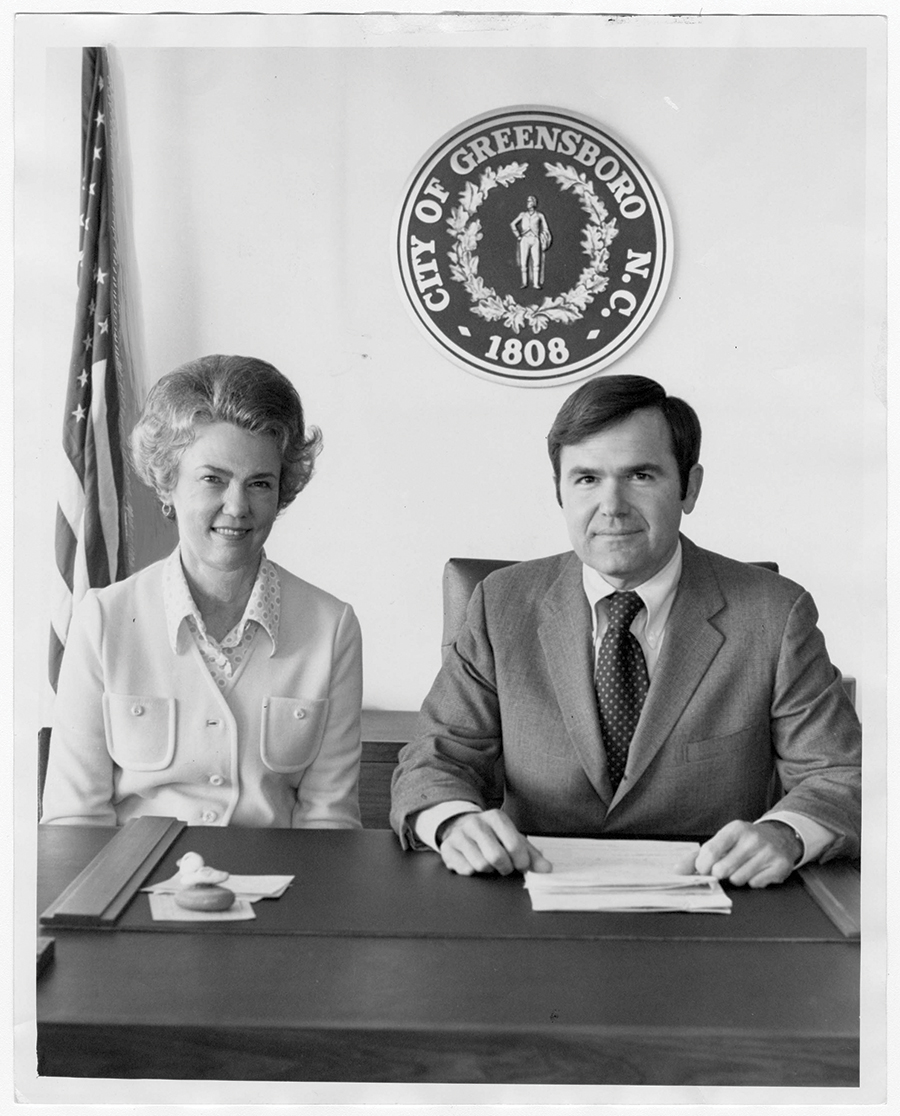
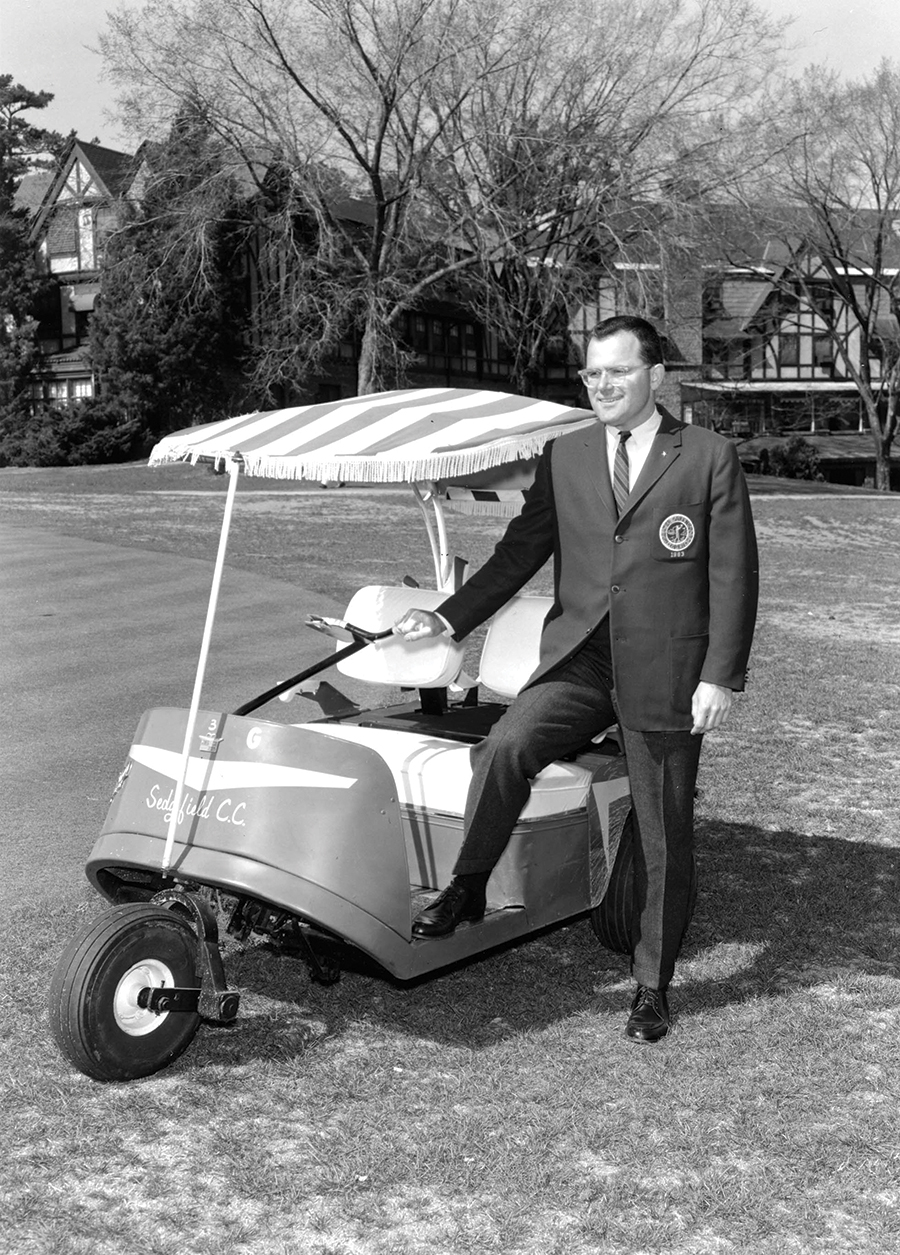
Melvin left politics in 1981 to focus on his banking career and philanthropic interests, retiring from banking in 1997 to accept the post of CEO and president of the Joseph Bryan Foundation at the personal urging of the aging Joe Bryan, who recognized both Citizen Jim’s innate passion for the Gate City and his knack for getting big things done.
Among other things, under Melvin’s guidance, the foundation raised $15 million to bring Elon Law School to the heart of downtown, orchestrated major improvements to the coliseum, helped create Center City Park and build the ballpark where the Greensboro Grasshoppers play. He also helped create Action Greensboro, a nonprofit that serves as a catalyst for public-private development to serve city residents.
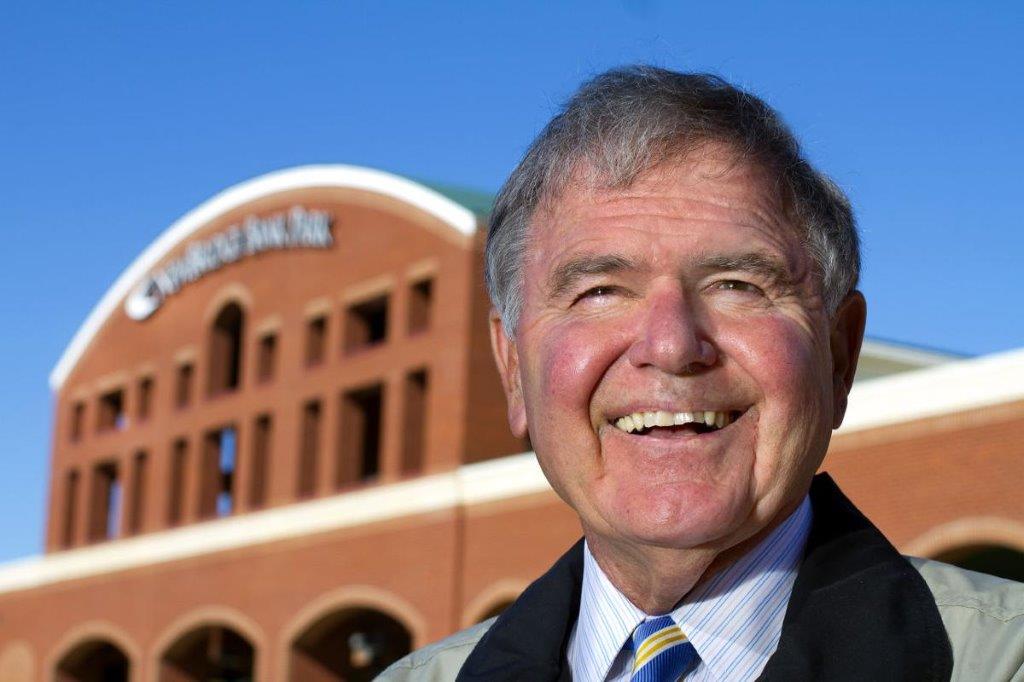
A decade ago, in the wake of a 30-year mass exodus of major textile, furniture and cigarette corporations, Melvin took on what would arguably became his most ambitious and challenging project of all — a campaign to bring major manufacturing back to the Triad.
“We lost more than 90,000 good-paying jobs when those vital industries left the region,” he pointed out when we caught up to him at his office, a few days after the megasite deal was announced. “Charlotte became a booming banking capital, and Raleigh thrived as center of high technology. But here in Greensboro and the Triad, we were always a manufacturing culture going back to the days when John Motley Morehead had the foresight to create the North Carolina Railroad through this part of the state that attracted people like the Cone brothers to Greensboro, setting off a manufacturing boom that lasted for a century. We needed to somehow get that back.”
The idea of a shared manufacturing megasite, he says, originated a decade ago when Stan Kelly and Mike Fox of the Piedmont Triad Partnership hired a top engineering firm to find a suitable location. They identified a 1,800-acre rural parcel off U.S. 421 between the town of Liberty and the Julian community.
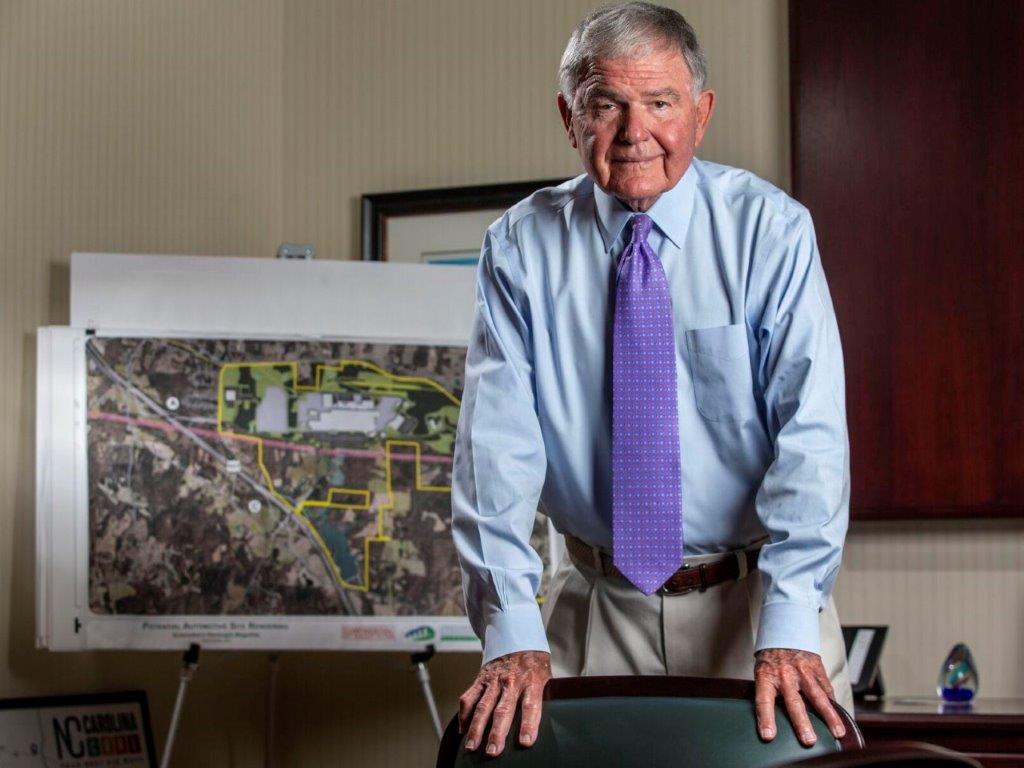
A unique partnership between Randolph County, the Bryan Foundation, the City of Greensboro and Piedmont Triad Partnership got the program off the ground, including Realtor Sam Simpson and real-estate lawyer David Joseph, whose task it was to convince more than 100 individual landowners to sell their property in the interest of the project. “That was no simple job,” Melvin says. “They sat on a lot of couches and just listened to folks. They joked that they each put on at least 10 pounds.”
The team “made generous offers to buy or replace the land,” Simpson says. “But for most of these people, this wasn’t about the money. This was about, in some cases, land their families had lived on for generations. This was about their roots in a community.” He continues, “They had to believe this project was going to make a difference in their lives — and everyone around them — before they agreed. That took patience and absolute transparency, which Jim Melvin insisted on.”
A major boost came two years into the process when the North Carolina Railroad expressed interest in joining the massive development project, granting the site unrivaled transportation access for a potential manufacturing client from a pair of interstate highways (and a third in planning stages) and a railroad line directly adjoining the site.
The final piece of property was acquired in 2017, and Toyota identified the megasite as a leading candidate for its new North American auto production plant. At the 11th hour, however, the deal collapsed when the company opted to move to Alabama instead.
Among other things, a unique working group that included the City of Greensboro, Randolph and Guilford counties, the North Carolina Railroad, Piedmont Natural Gas, Duke Energy and a key environmental engineering firm managed to collaborate on an even more compelling turnkey site that would have everything a major manufacturer need to be simply “move in and get to work.” This goal was achieved when the Greensboro City Council agreed to extend water and sewer to the site.

“The working group was the final piece of the puzzle, and Jim Melvin’s visionary approach to things was so important,” notes Brent Christensen, CEO of the Greensboro Chamber of Commerce. “It brought everyone together to share ideas and get things done. That’s the Melvin way.”
“None of this happens without Jim,” echoes Randolph County Commissioner Darrell Frye, who has known and worked with Melvin for years. “He knew how to get the right people together and make it happen. He’s a visionary who never gives up. I think the positive multiplier effect of this is going to prove unlimited in the future. It worked out even better than we hoped.”
Which brings us back to Citizen Jim’s novel commencement address to the graduating class at Greensboro College, an admiring mention of which reportedly found its way into commentary in The New York Times. The man clearly practices what he preaches.
“But did it really happen the way your friends like to tell the story?” We put that question to him at his Bryan Foundation offices a few days after Toyota made its groundbreaking announcement.
“Believe it or not,” he confirmed with a hearty laugh, “it did happen like that. But you’ve got to realize the circumstances. It was cold and starting to rain. The last all those parents sitting there wanted was to hear some long-winded politician give a speech. So, I just gave them my favorite quote by Winston Churchill. They seemed to really appreciate that.”
Finally, we wondered if this latest accomplishment might be a fitting last hurrah for the indefatigable Melvin, who turned a youthful 88 on Christmas Eve.
The man who never, never gives up, just smiled.
“How about we just say the latest hurrah,” he suggested. OH







